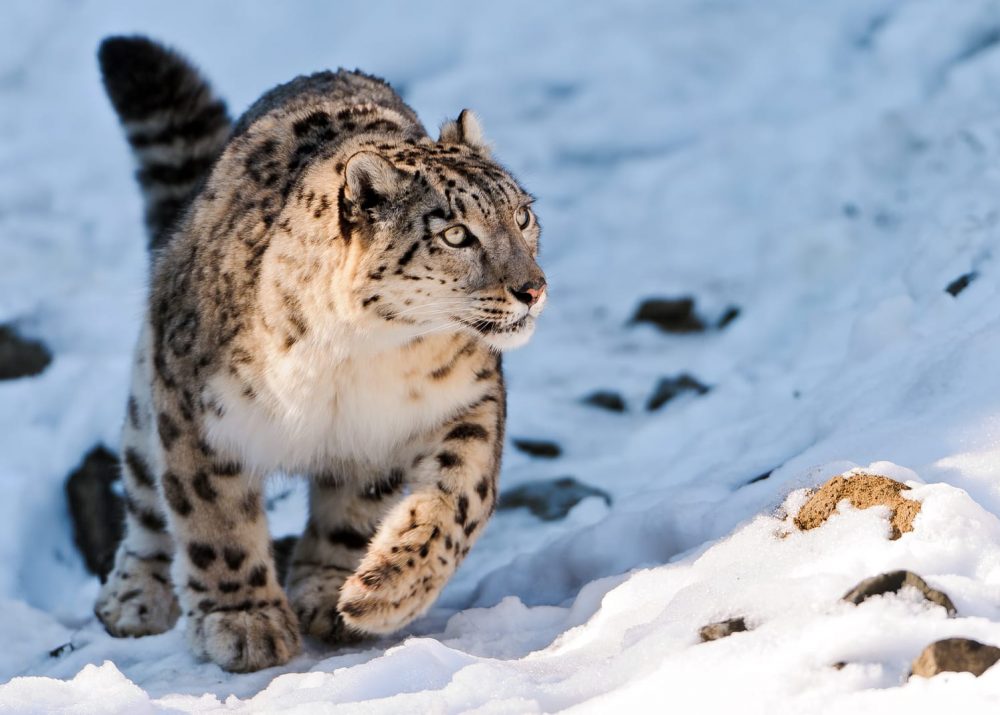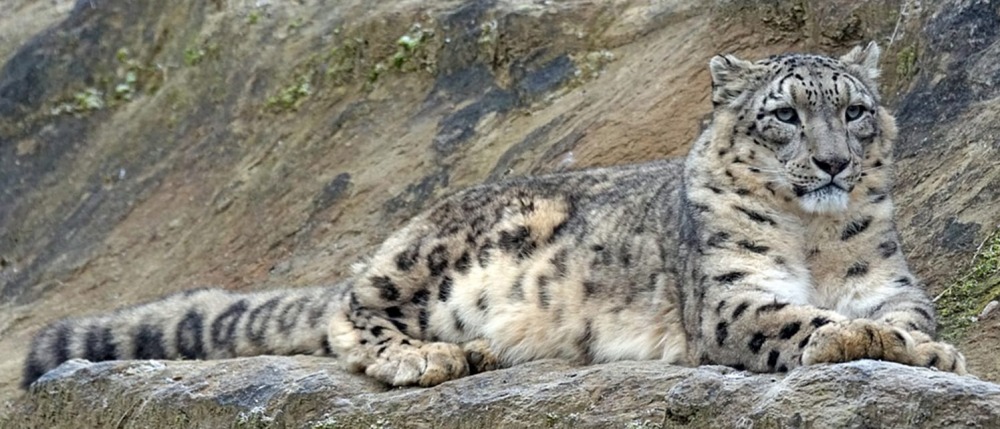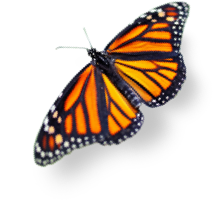Snow Leopards are Doing Better, So Conservation is Even More Important

The Snow Leopard (Panthera uncia) is due for a status update. Once considered “Endangered” due to a small, shrinking population, the International Union for Conservation of Nature (IUCN) now considers the Central Asian big cat “Vulnerable” due to a larger, still shrinking population.
Wait, what?
So apparently, as the IUCN profile of the species describes, it’s difficult to measure the population of a secretive, elusive and solitary cat that lives across millions of square kilometers of the highest and most isolated mountains in the world.
Fair point.
But over the past couple of decades, we’ve gotten better at measuring populations. With better monitoring techniques, researchers concluded that the global Snow Leopard population is bigger than we thought. Much bigger. Previous estimates of the global population came out around 2,500 mature individuals, but IUCN now believes between 4,000 and 9,000 Snow Leopards live in the wild.

Along with new population estimates, the rate of population decline might be lower than we thought. Some locations have stable or increasing populations, and some locations may have declining populations. Again: it’s hard to count snow leopards.
A species needs to hit strict criteria in order for IUCN to consider it “Endangered.” With this new information, Snow Leopards don’t hit those thresholds.
Good news for Snow Leopards, right?
Sort of.
Snow Leopard habitat continues to fragment and degrade. Some stories report that climate change threatens two-thirds of the species’ habitat. IUCN notes that poaching and retaliatory actions put the leopard’s future in jeopardy. But, IUCN also notes, conservation efforts have improved conditions for Snow Leopards in much of their habitat. In the past couple of decades, poaching and killing has become more infrequent in some areas. Multiple countries have seen large swaths of leopard habitat protected and community-based conservation initiatives implemented.
In a (measured) hopeful moment such as this, we catch glimpses of actual conservation results from all the efforts to protect Snow Leopards.
“Although we have developed better technology and better field techniques for measuring wildlife populations,” said Rick Passaro, Rainforest Trust’s Asia Conservation Officer, “this can only be counted as a conservation success story due to the hard work of all the conservationists working together to protect both the species and its habitat.”
So now, when a species is doing better than we thought, it becomes even more relevant to invest in further conservation. Because it works.
In the Snow Leopard’s Nepalese range, Rainforest Trust is partnering with Koshi Tappu Kanchenjunga Biodiversity Education Livelihood Terra-Studio (KTK-BELT) to protect a vital stretch of habitat. With local community involvement, the new Lumbasumba Conservation Area will protect over 176,000 acres of forests and mountains.
So don’t cover over your “Save the Snow Leopard” bumper sticker just yet.
Not quite yet.

Sign up to receive the latest updates
"*" indicates required fields

